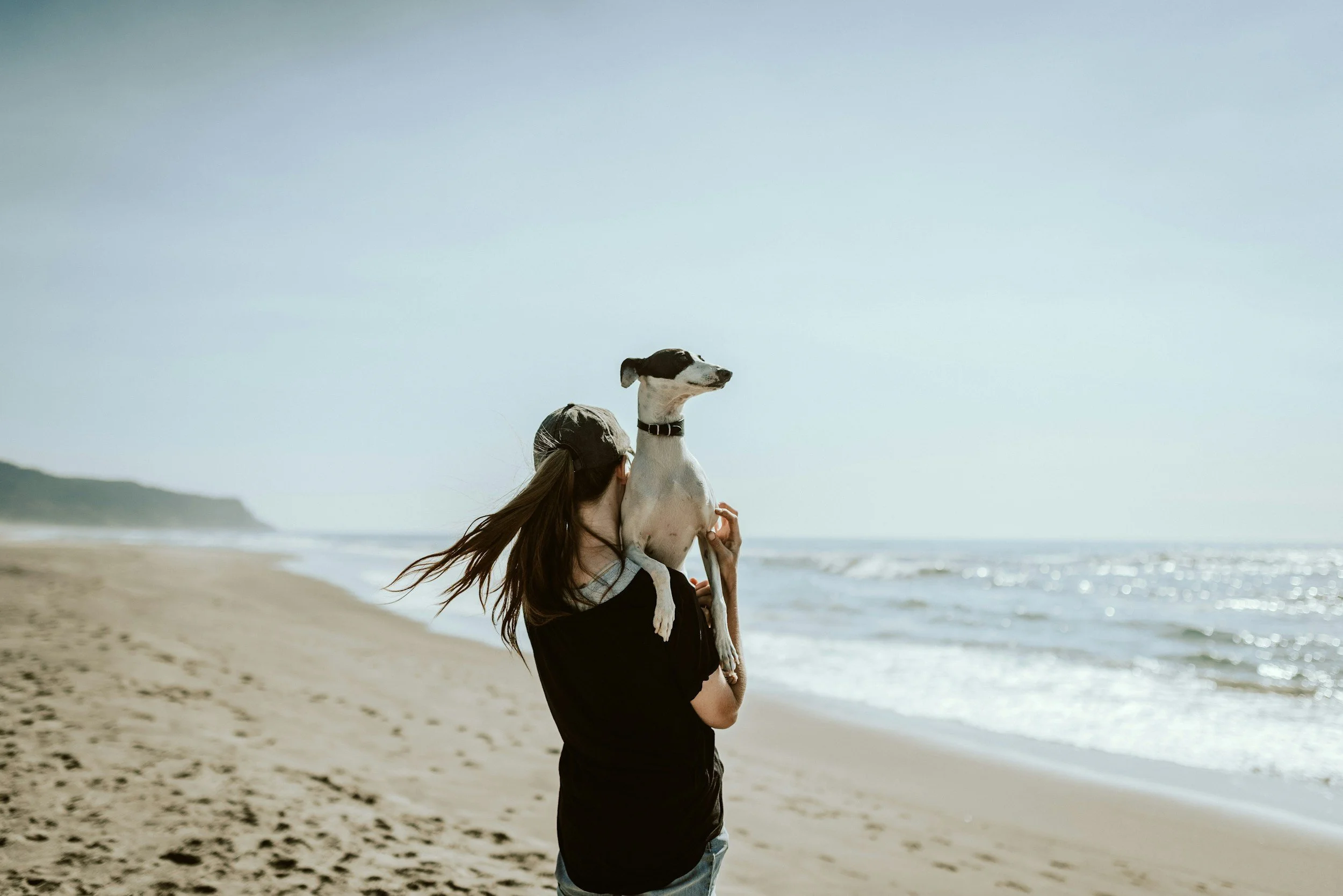From Overwhelmed to Empowered: How to Start Helping Your Reactive Dog Today
If you’re here, you’re probably feeling overwhelmed. Maybe your dog lunges and barks at other dogs on walks. Maybe they growl when guests come over, or bark at every sound outside the window. You love your dog, but you’re exhausted, confused, and wondering what you’re doing wrong.
First, take a breath—you’re not alone. Reactive dogs are incredibly common, and there is help for reactive dogs that’s compassionate, effective, and grounded in science.
This blog is your starting point. I’ll walk you through a few small but powerful steps you can take today to support your dog, feel more confident, and begin building the calmer life you both deserve.
1. Understand that reactivity isn’t “bad behavior”
Reactivity isn’t your dog trying to be difficult. It’s their way of saying “I don’t feel safe right now.” Whether it shows up as barking, growling, lunging, or freezing, your dog is experiencing stress and reacting the only way they know how.
Labeling your dog as aggressive doesn’t give the full picture. If you’re wondering what to do with an aggressive dog, start here: view their behavior as communication, not defiance. That mindset shift alone can help you respond with more clarity and compassion.
2. Start observing—not reacting
Before jumping into training, take a few days to watch your dog’s body language. When do they seem relaxed? What triggers a shift? Do their ears go back, tail stiffen, breathing quicken, or eyes widen?
This is one of the most overlooked reactivity first steps, but it’s incredibly important. Noticing the early signs of stress gives you more time to intervene calmly, rather than getting caught in a meltdown moment.
You don’t have to decode everything right away. Just start noticing.
3. Reduce exposure to triggers (yes, even if it means changing your routine)
This one can feel hard. You might think your dog should be able to walk around the block or hang out at the brewery patio with you. But forcing them into situations they aren’t ready for usually makes things worse.
Calming a reactive dog starts with giving them space—literally and figuratively. Take a different walking route. Avoid the fence line standoff with the neighbor’s dog. Use white noise to block outside sounds if they bark at every noise.
Reducing overwhelm isn’t a step back. It’s a step toward nervous system safety—and that’s where real training can begin.
4. Keep treats in your pockets (and by the door)
You don’t need to have it all figured out to start helping. A simple thing you can do today is pay your dog for the good stuff they already do.
Did they glance at another dog and then look back at you instead of barking? Treat.
Did they hear a noise and stay quiet? Treat.
Did they choose to walk with you instead of pulling toward a trigger? Jackpot.
These tiny moments build trust, confidence, and positive associations. They’re the foundation of positive reinforcement dog training help.
5. Know that you don’t have to do this alone
You are not failing. This is not your fault. You don’t need to have a perfectly behaved dog to be a good dog parent.
Getting help for reactive dogs is not about controlling every behavior—it’s about building understanding, changing the emotional response underneath, and learning tools that work for your dog.
If you're looking for personalized support from a Certified Dog Behavior Consultant who specializes in anxiety, reactivity, and aggression, I’d love to help. I offer dog behavior consultant online sessions that meet you where you’re at—with empathy, science-backed support, and zero judgment.

